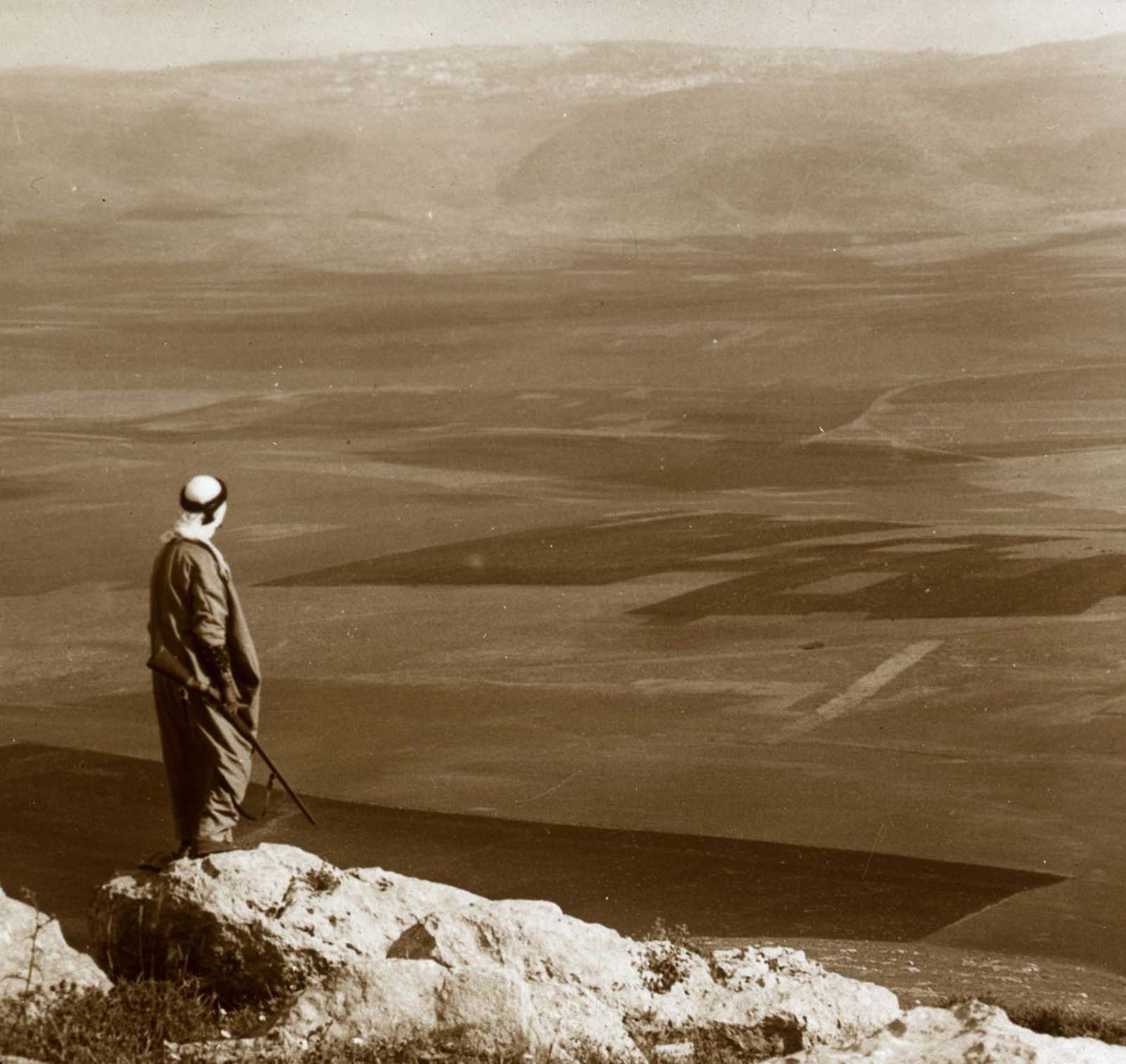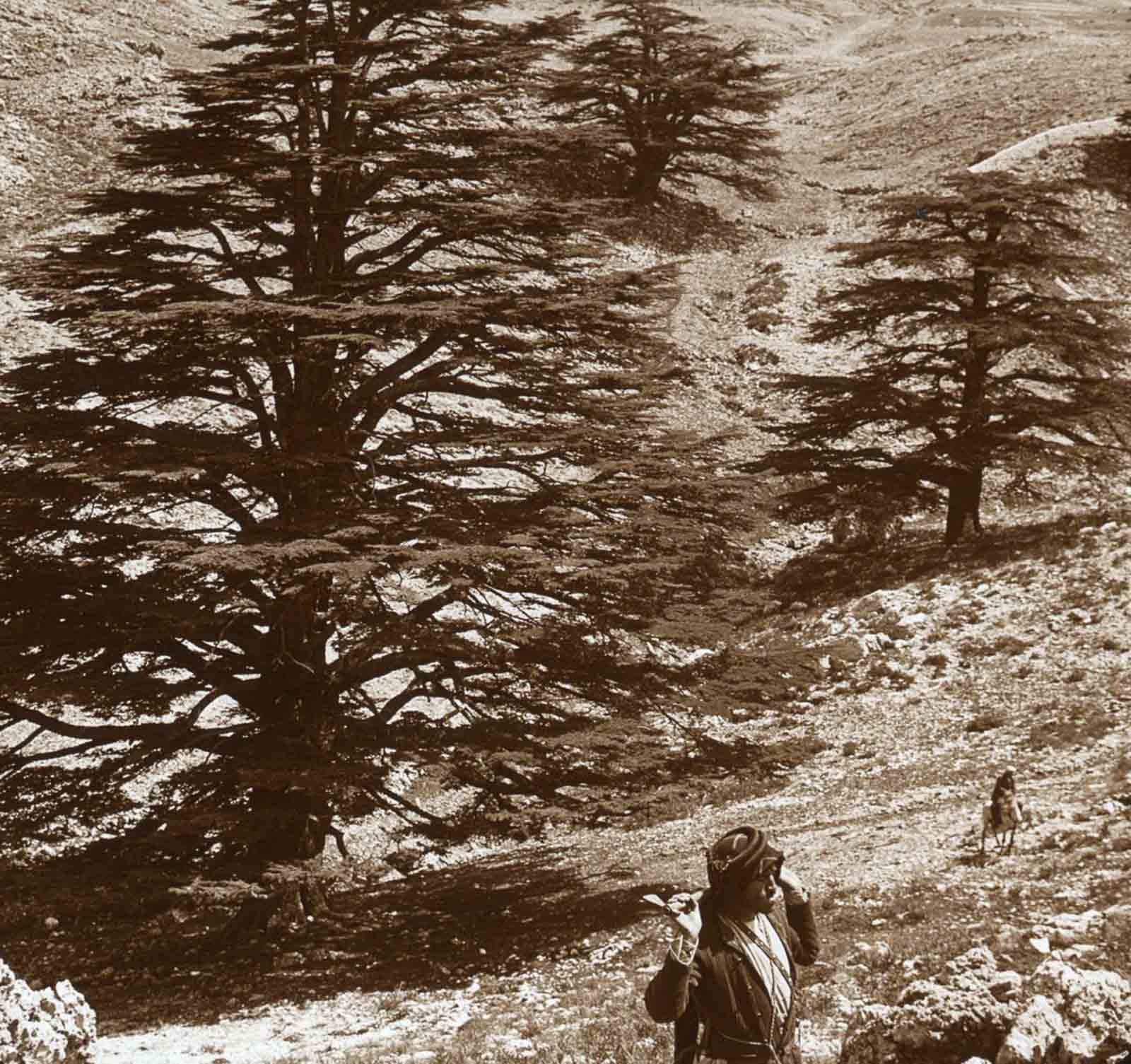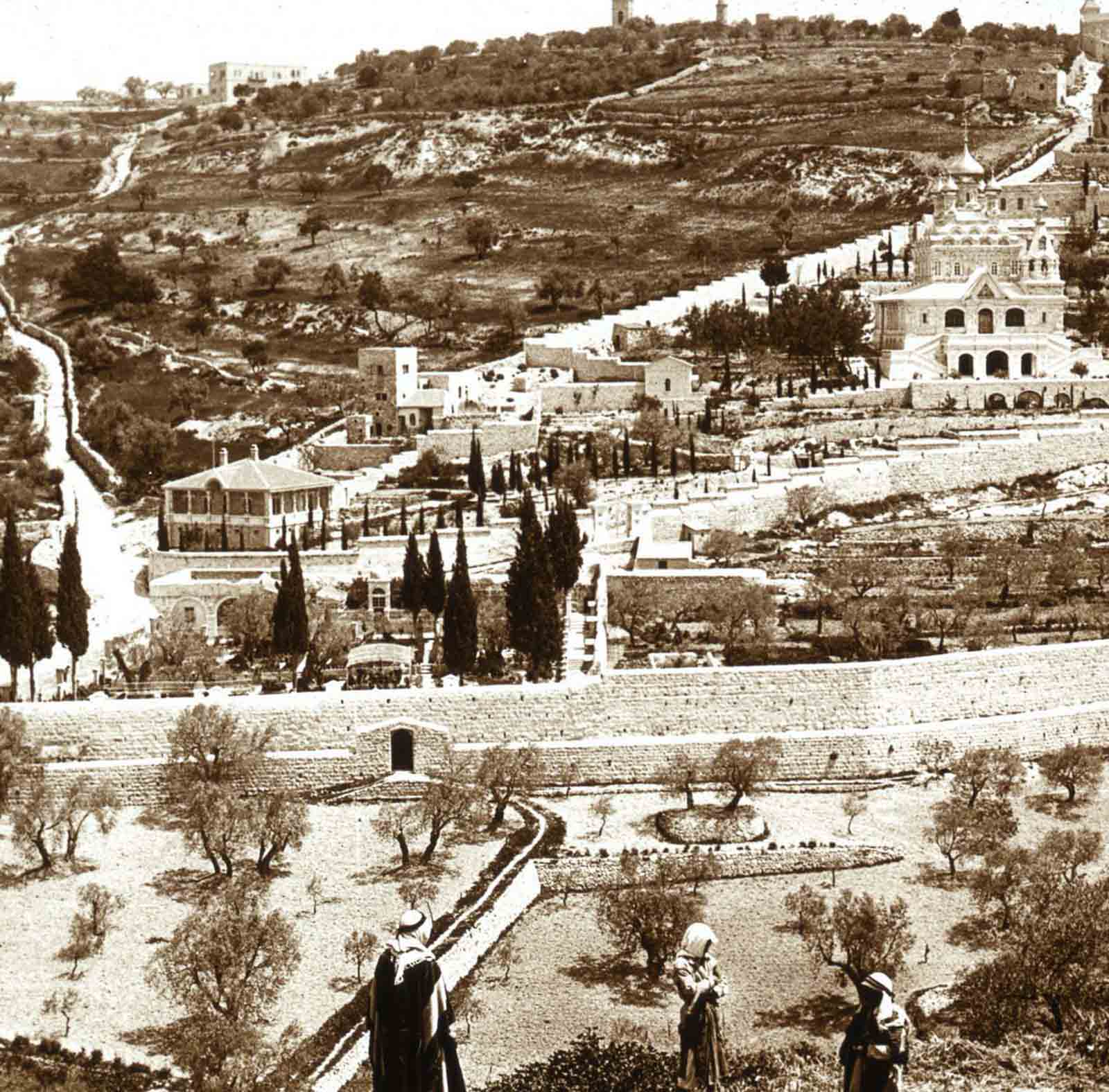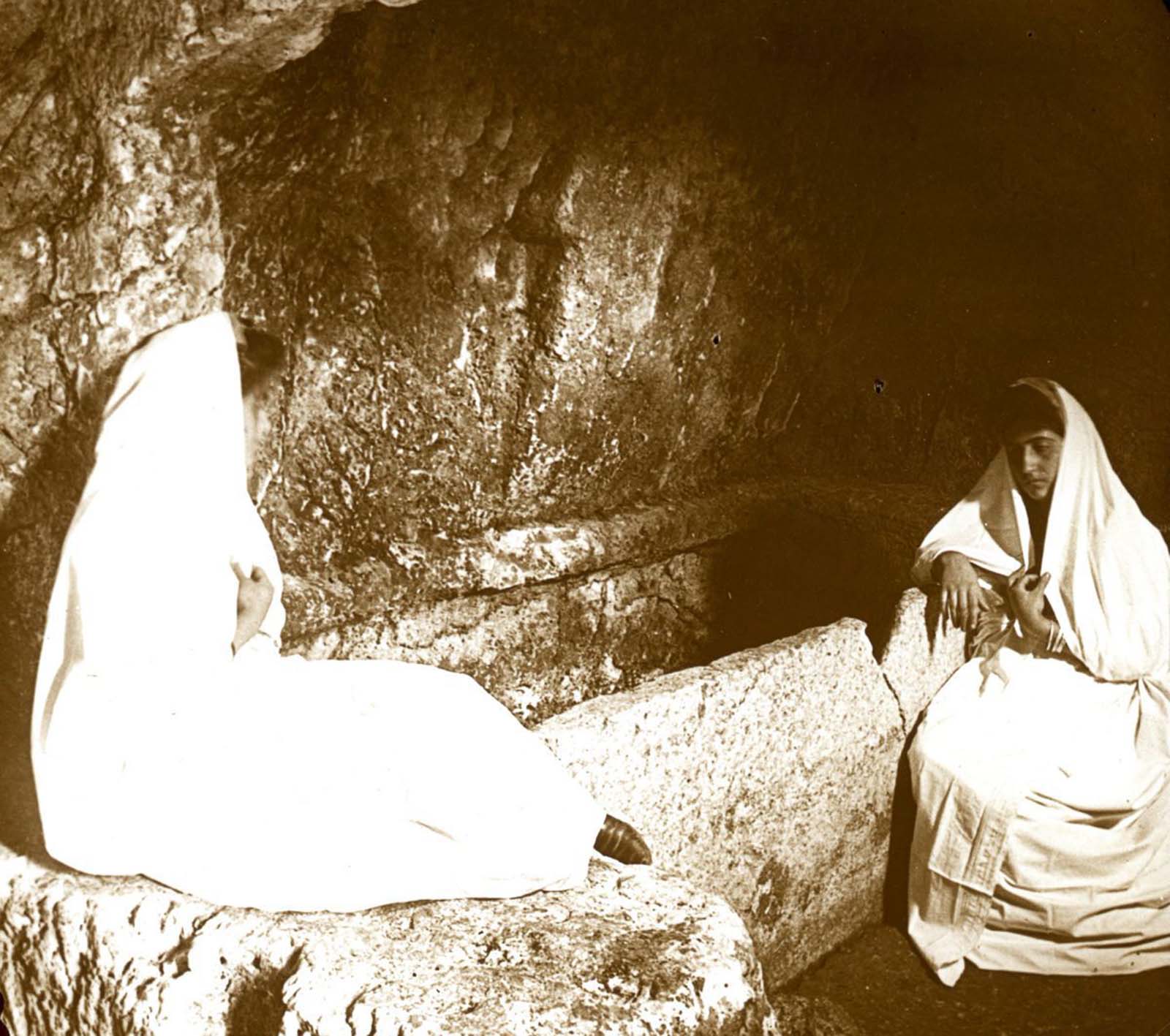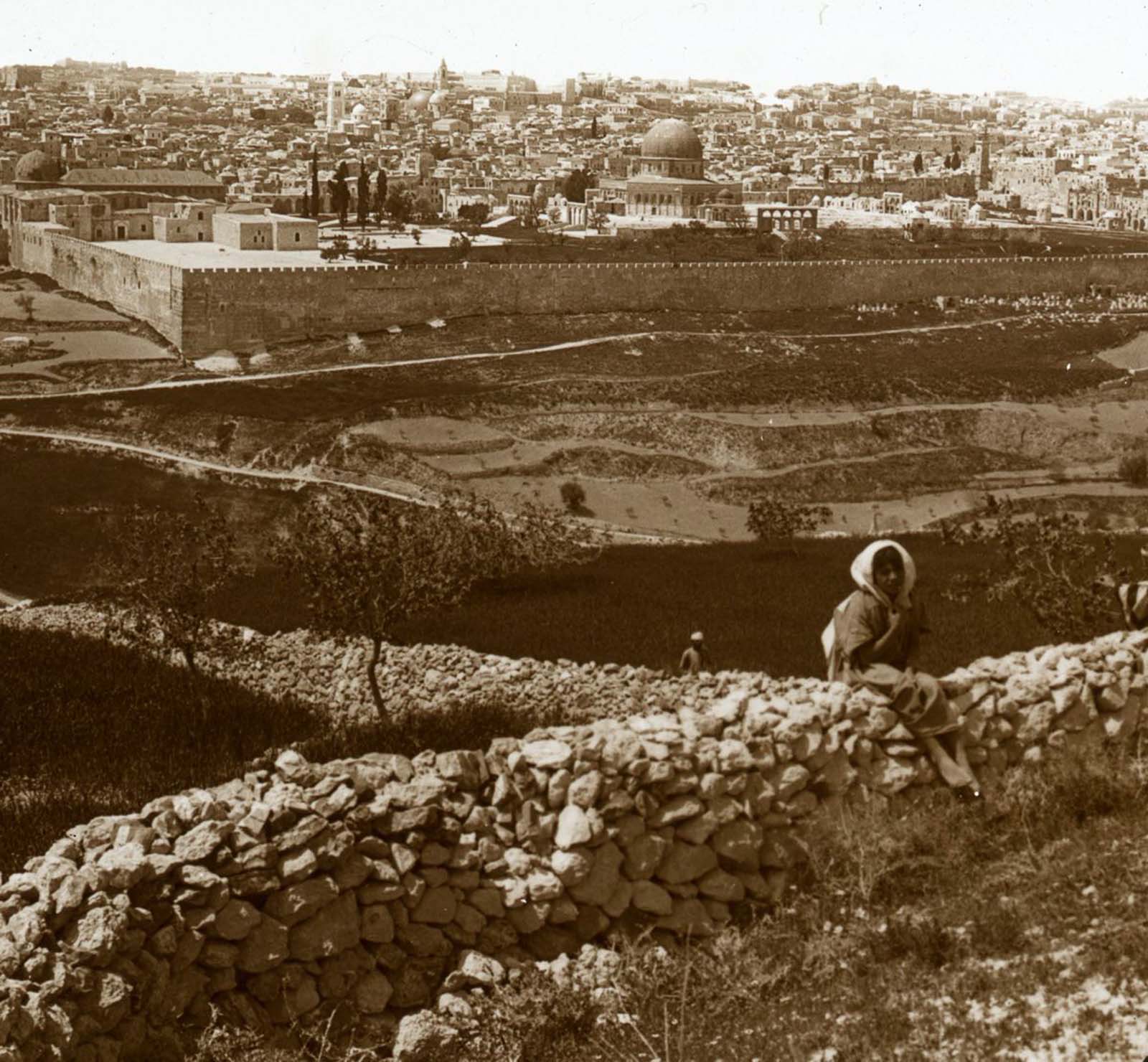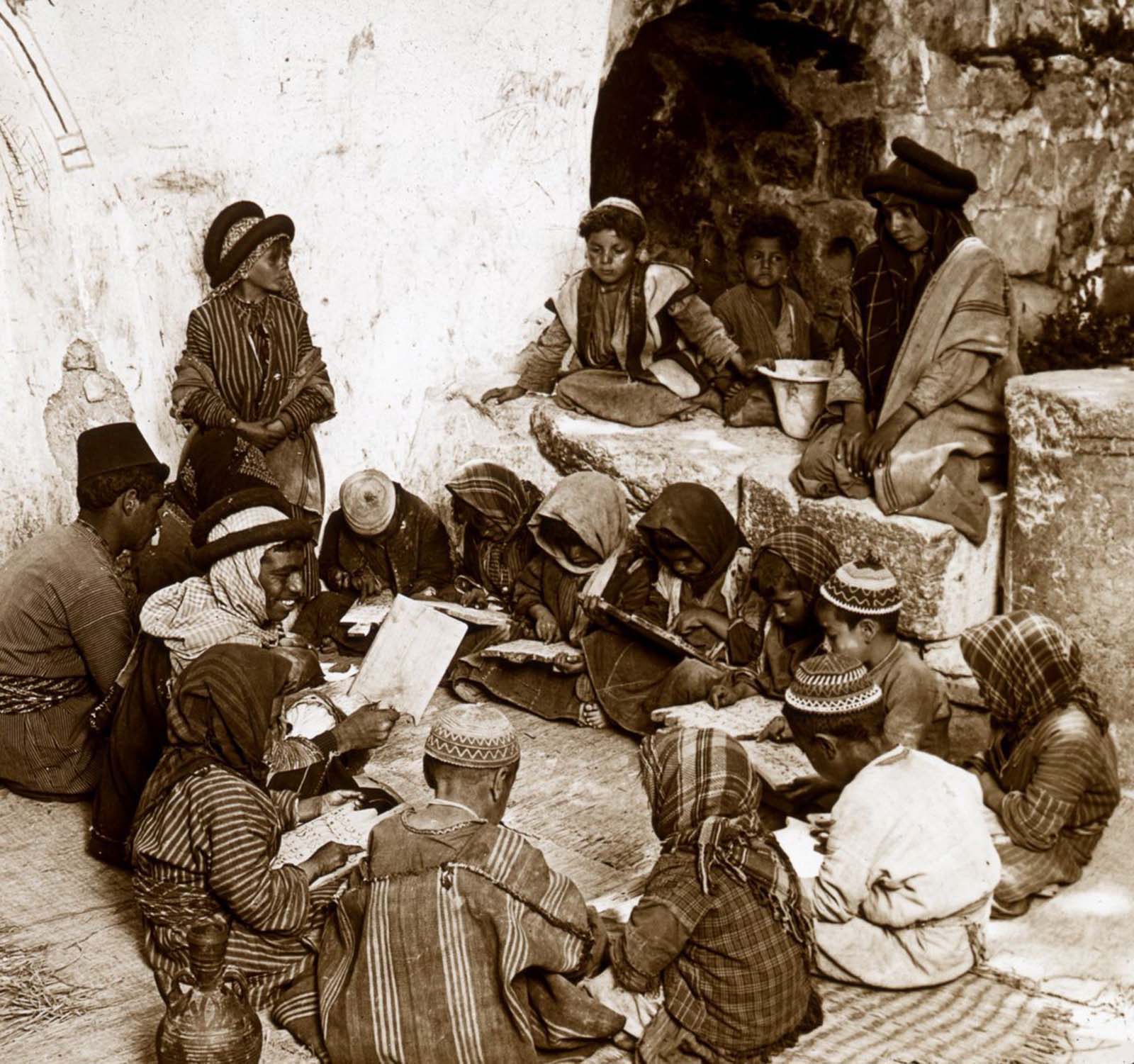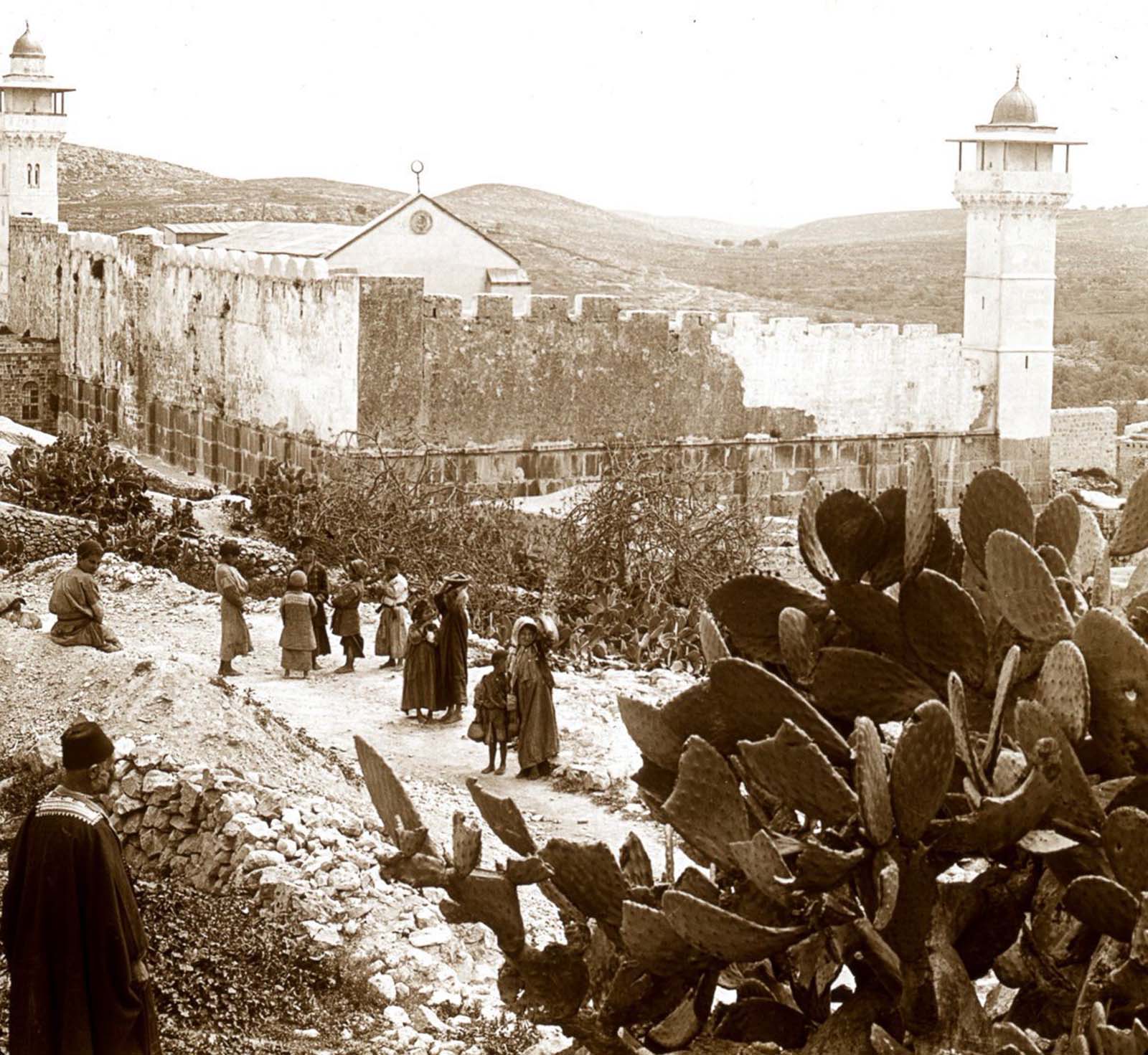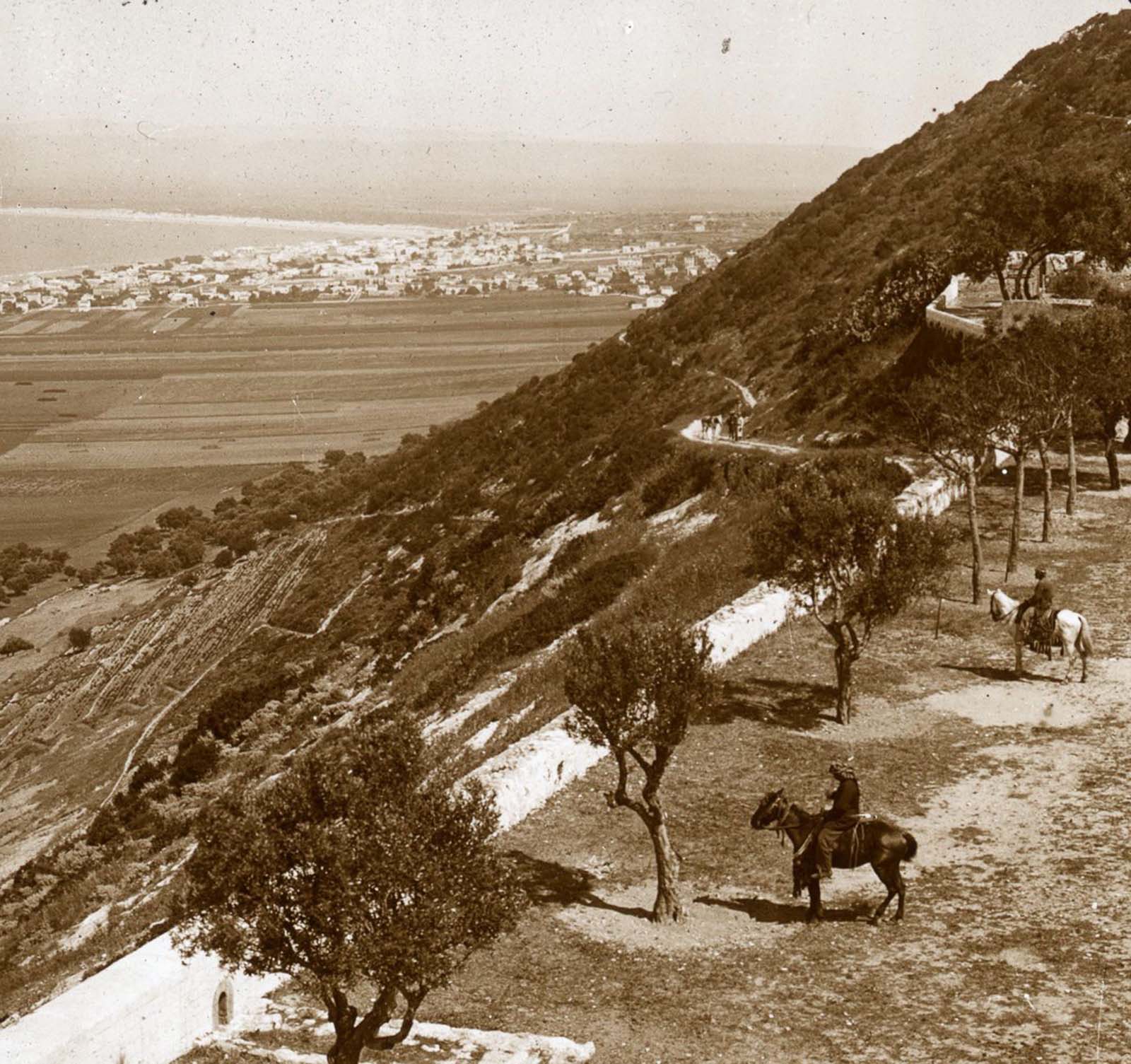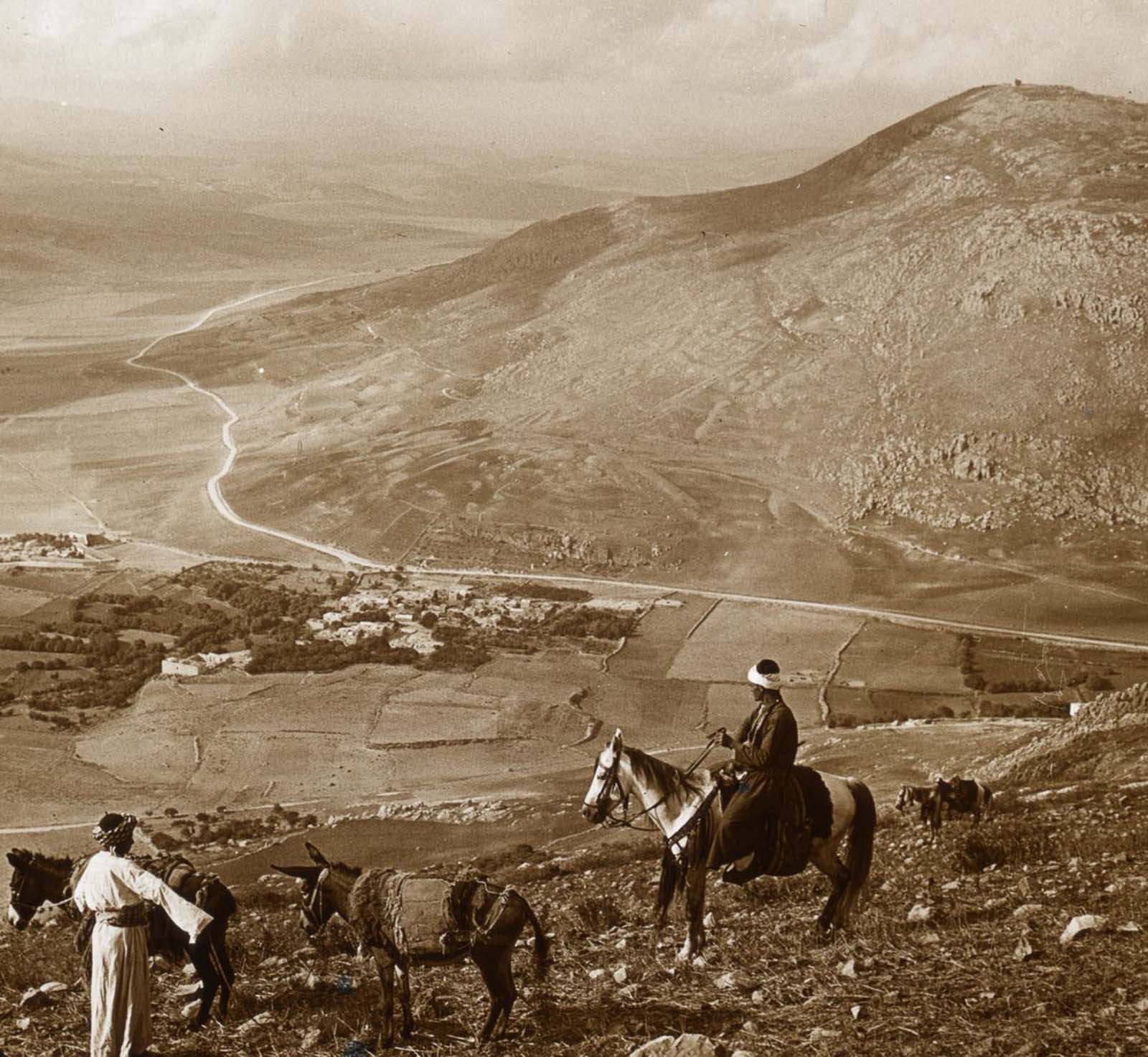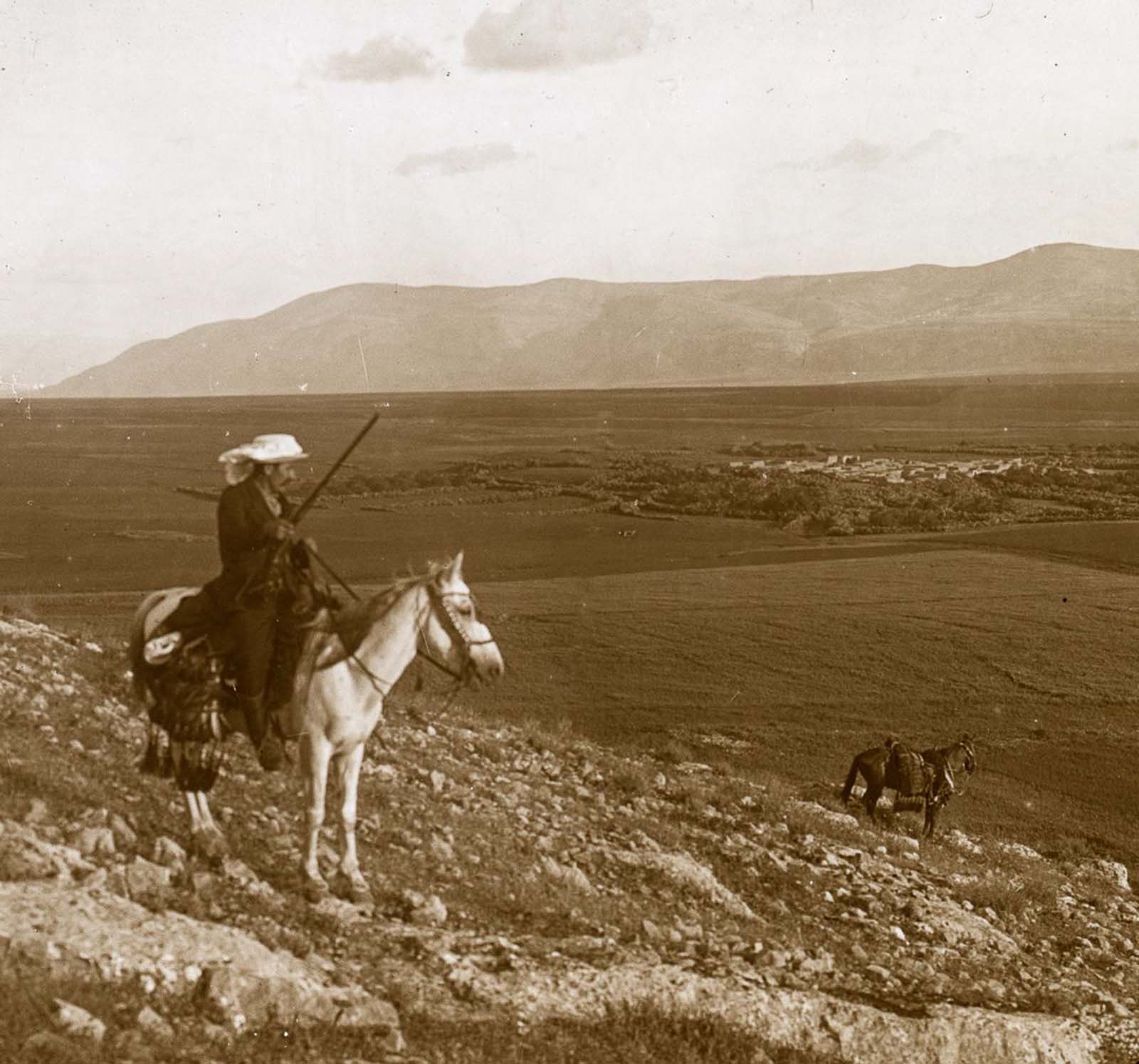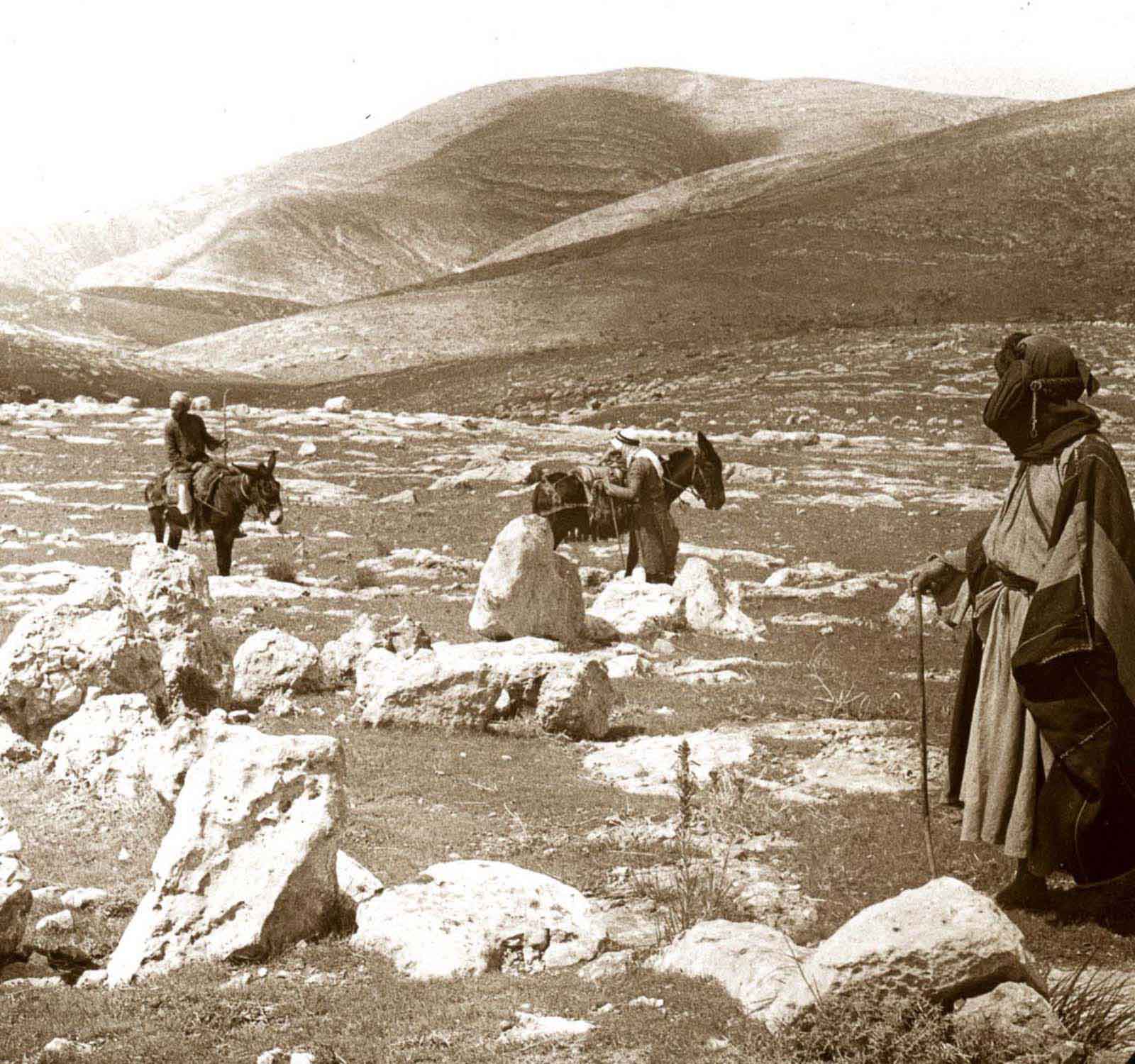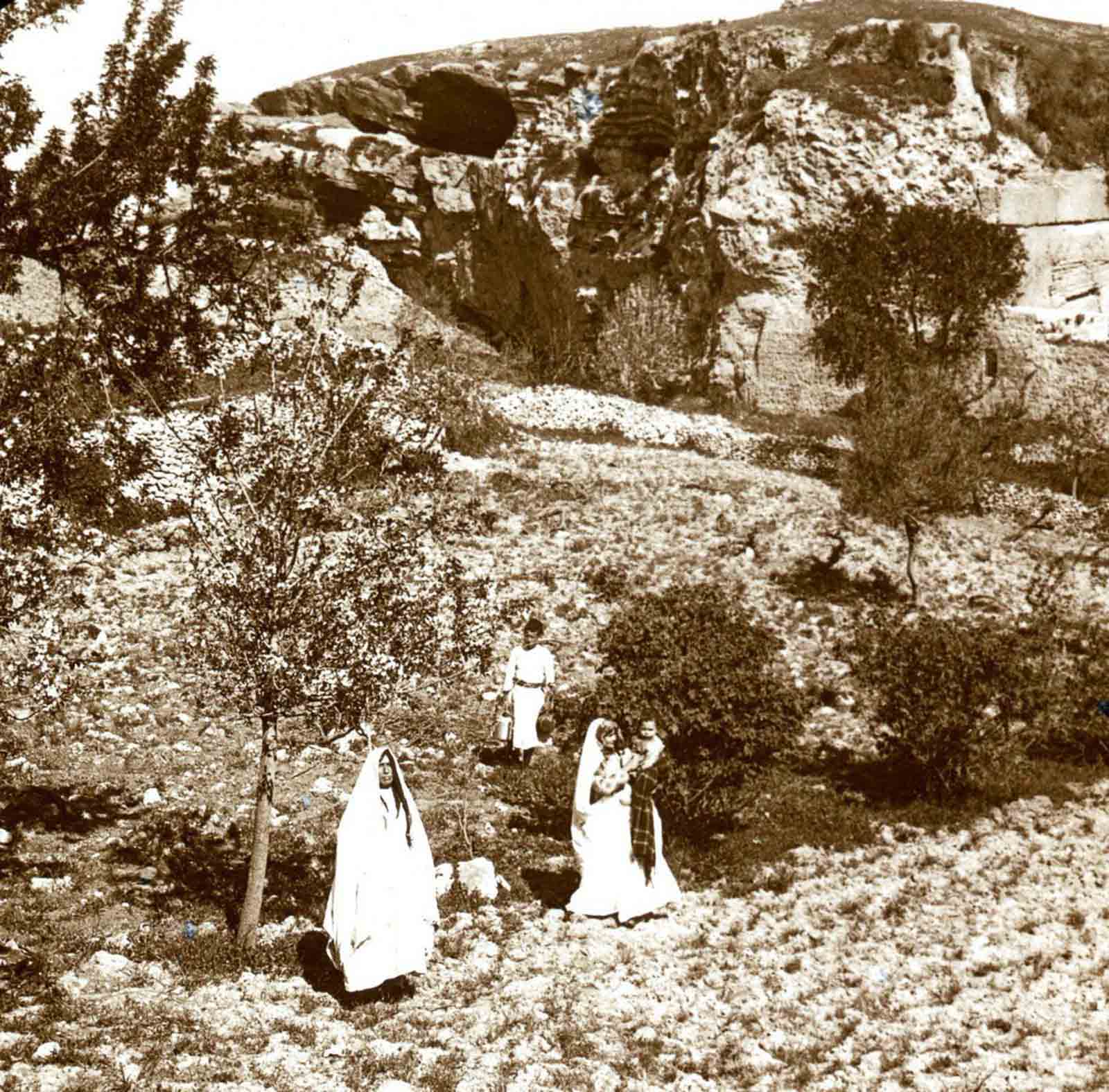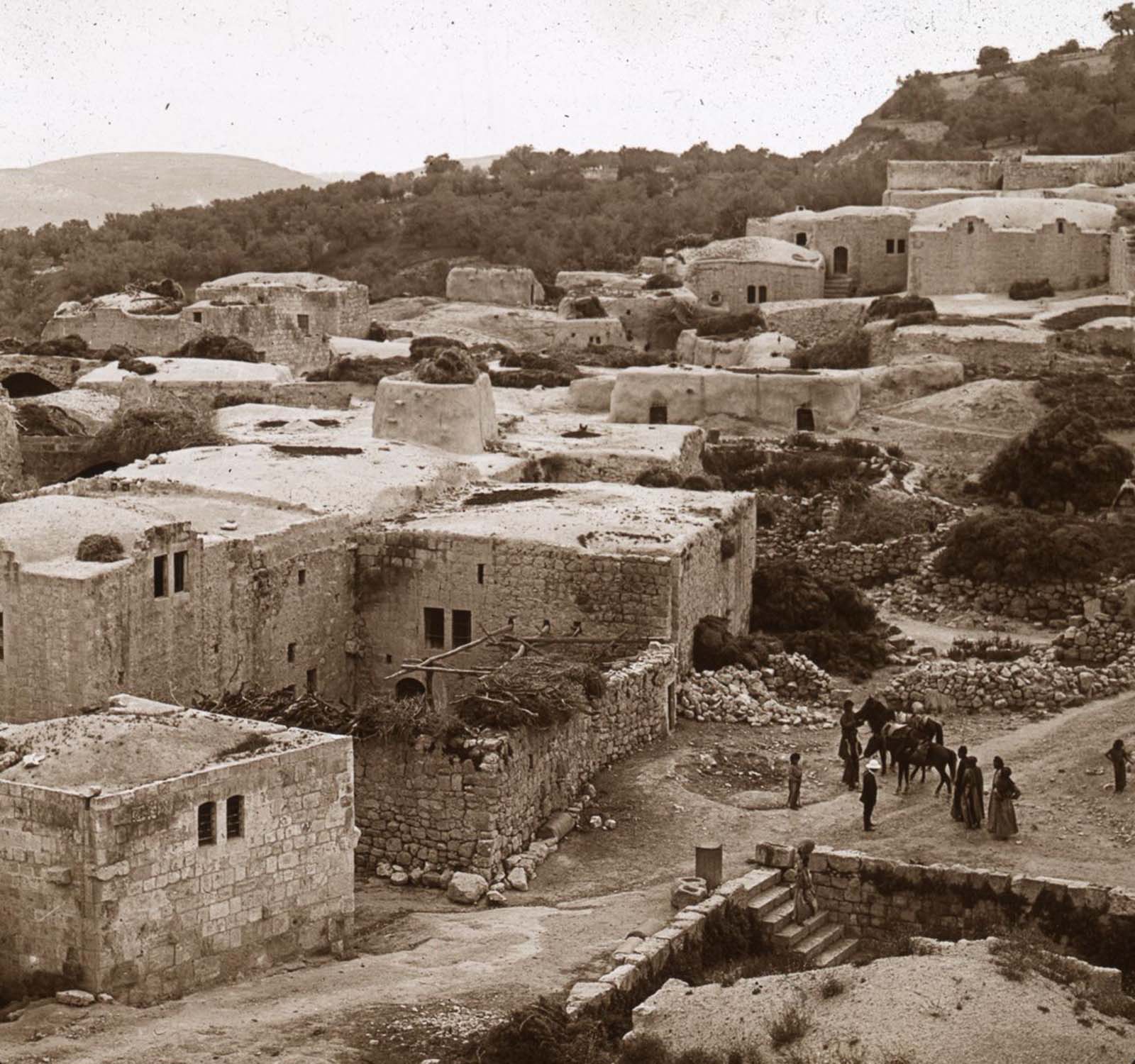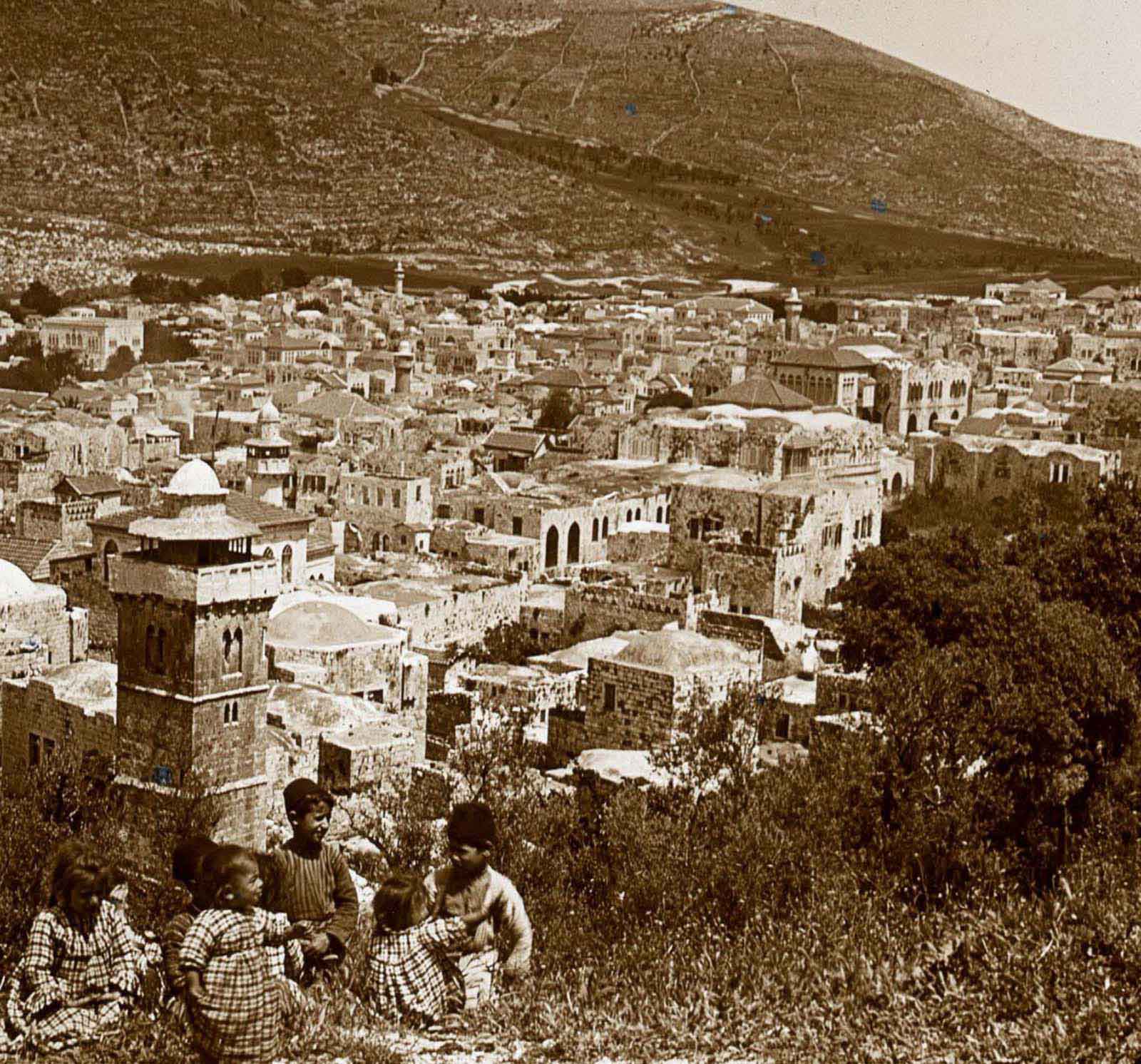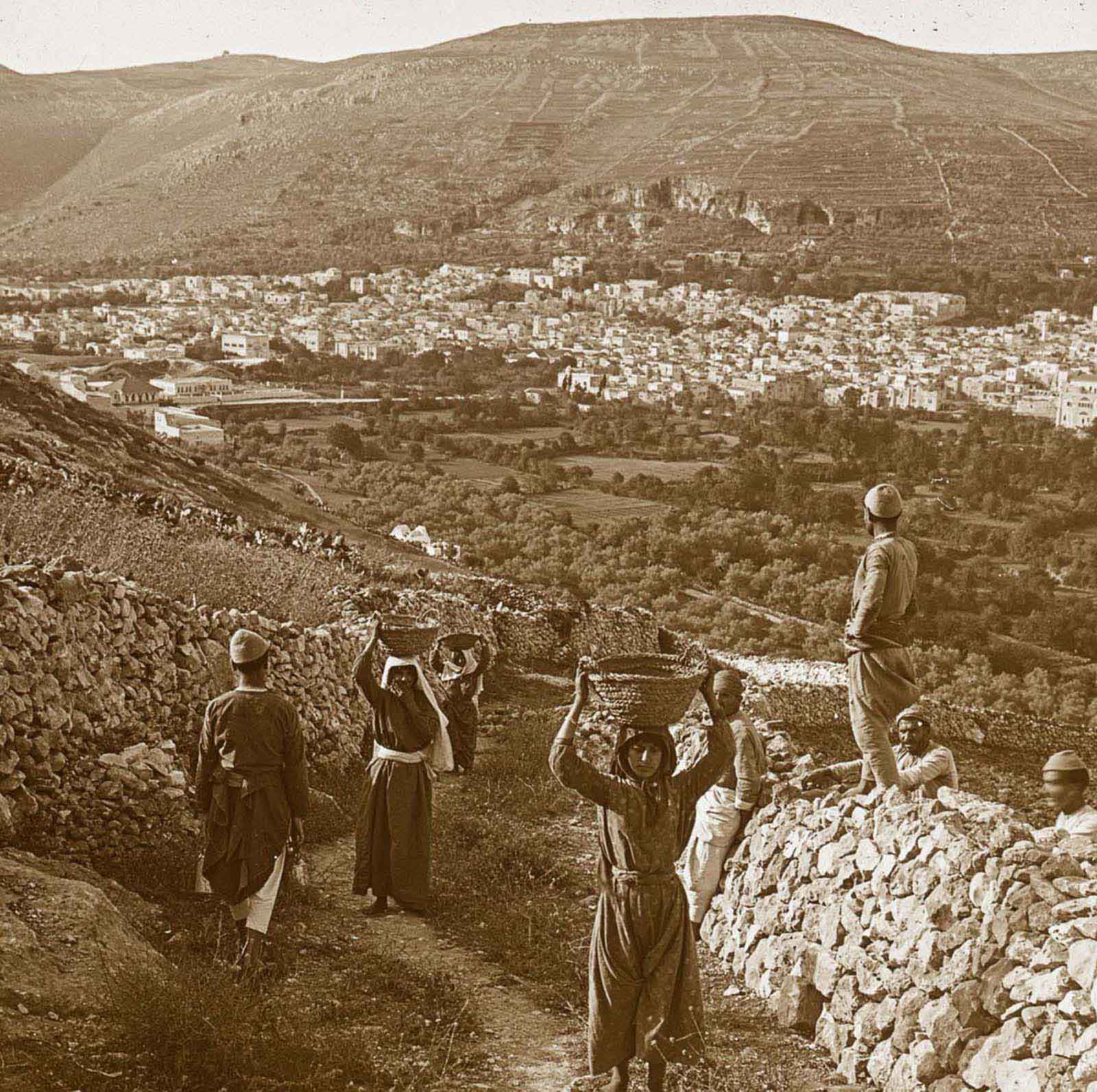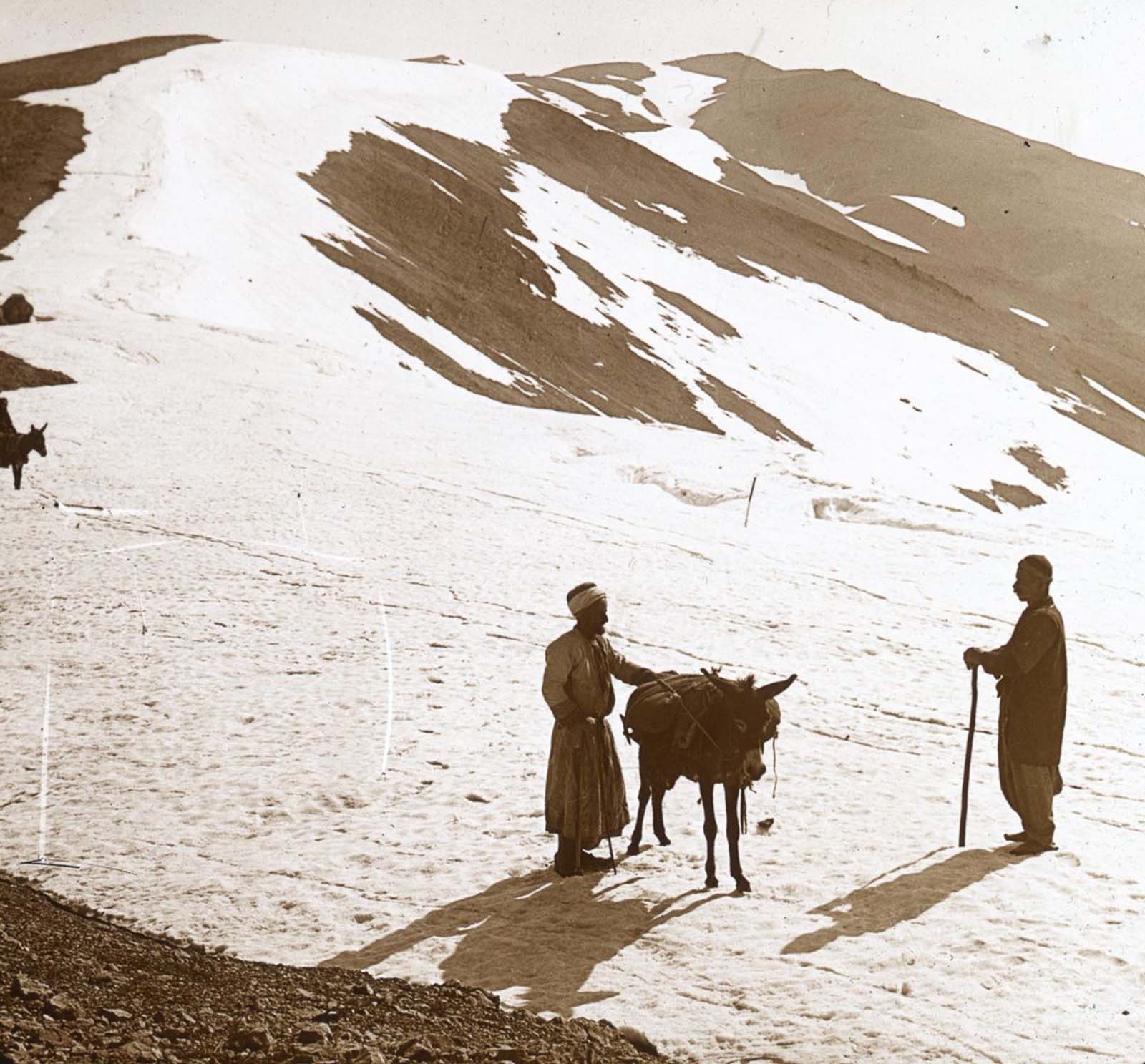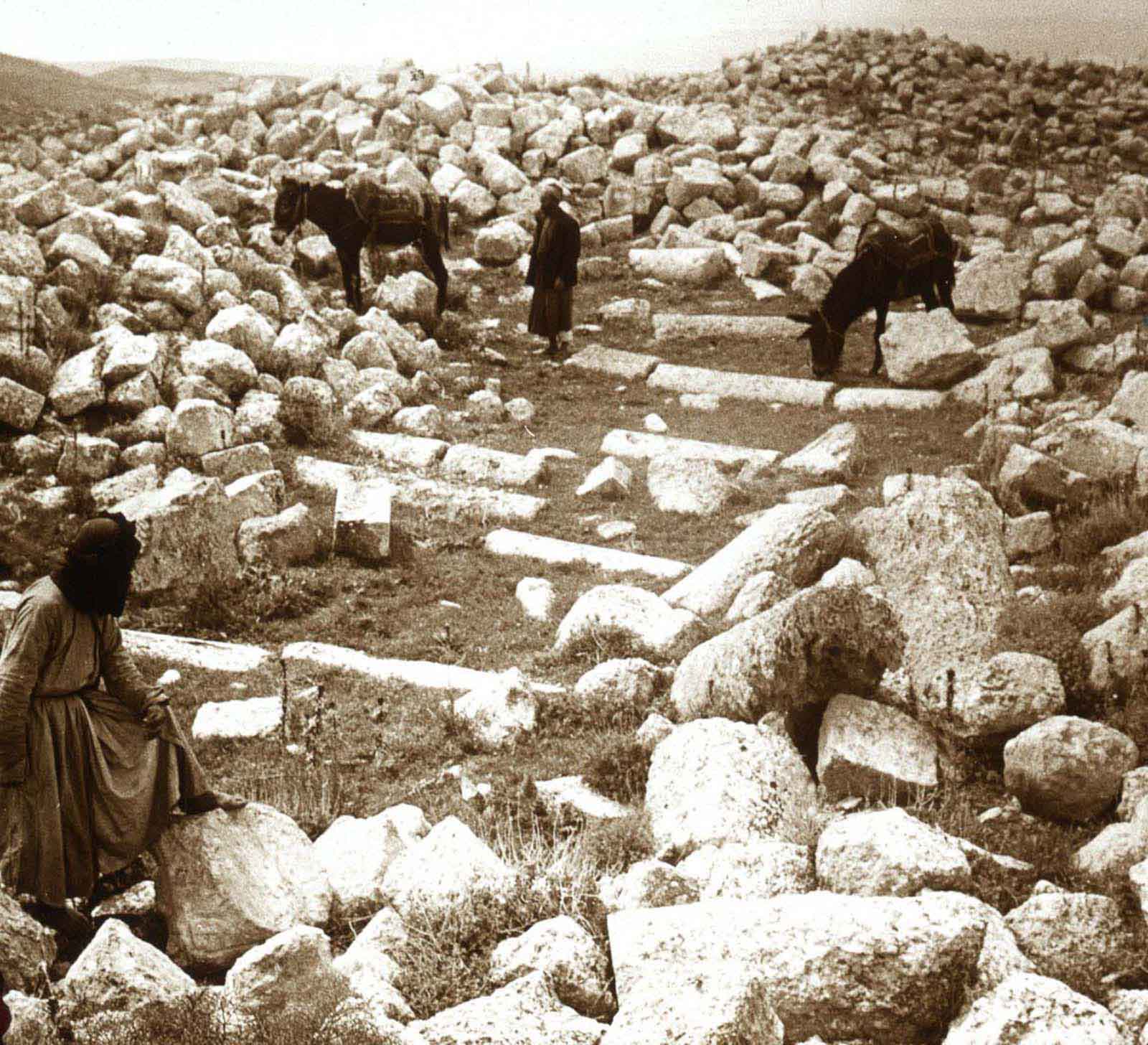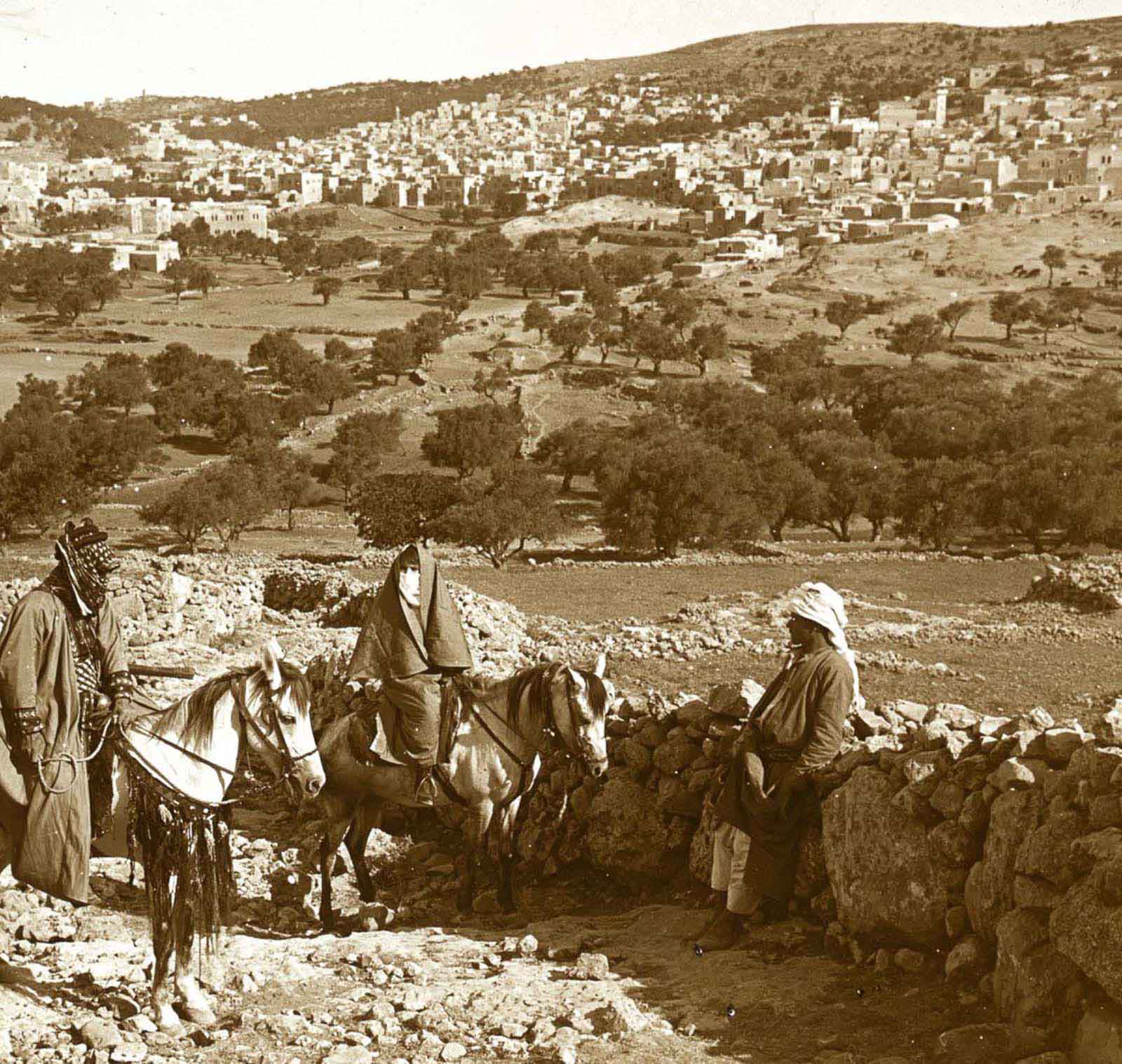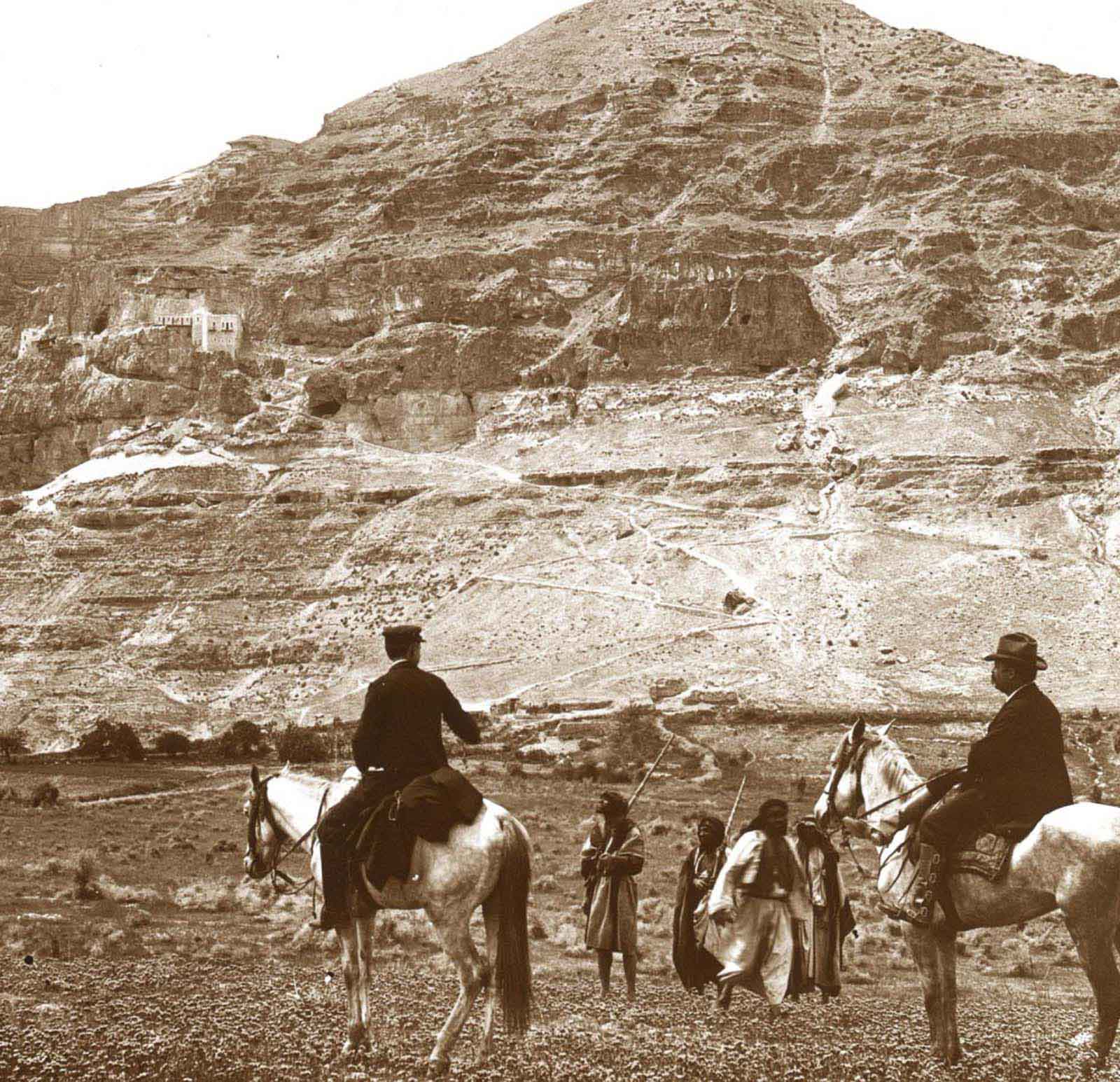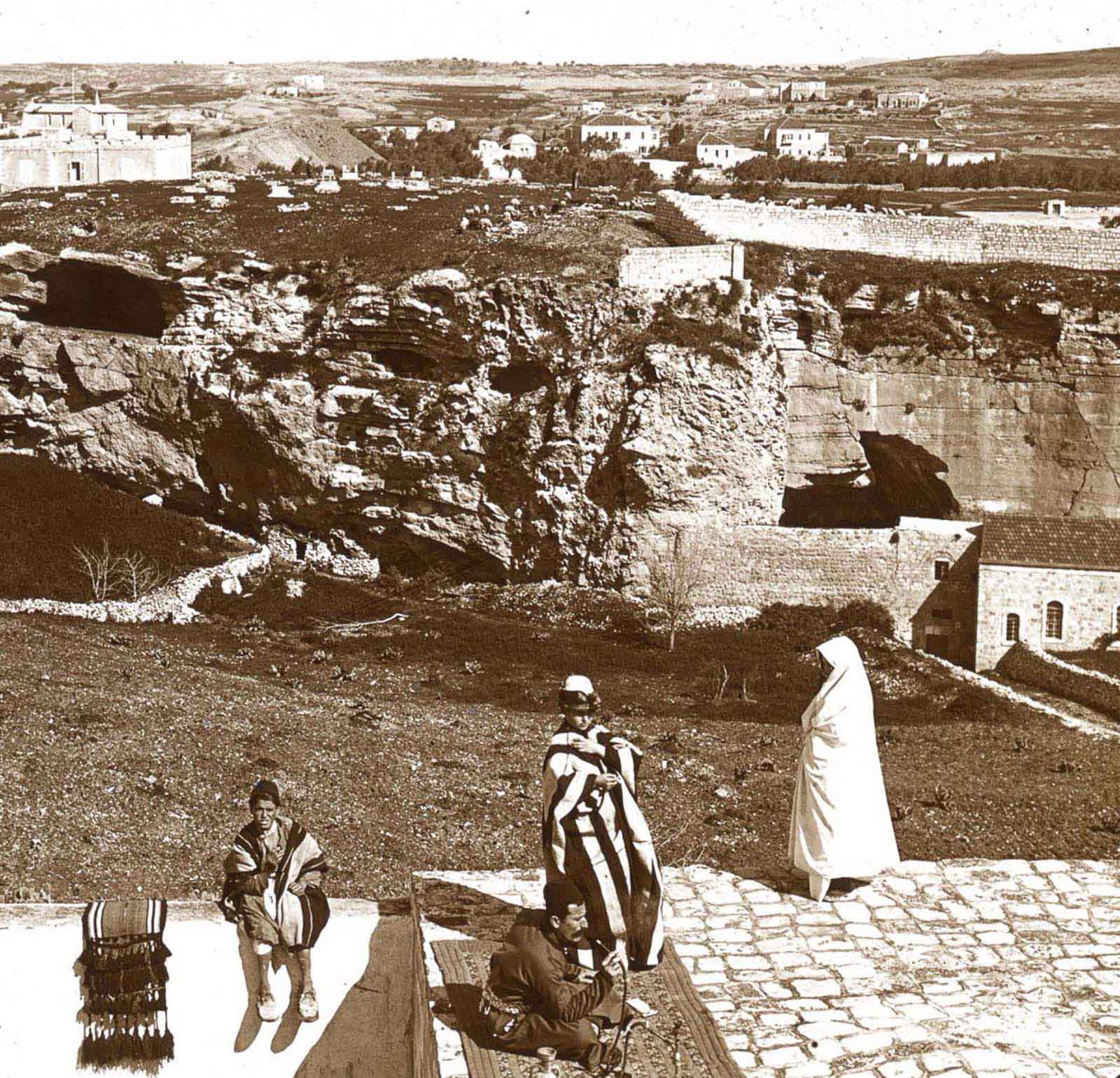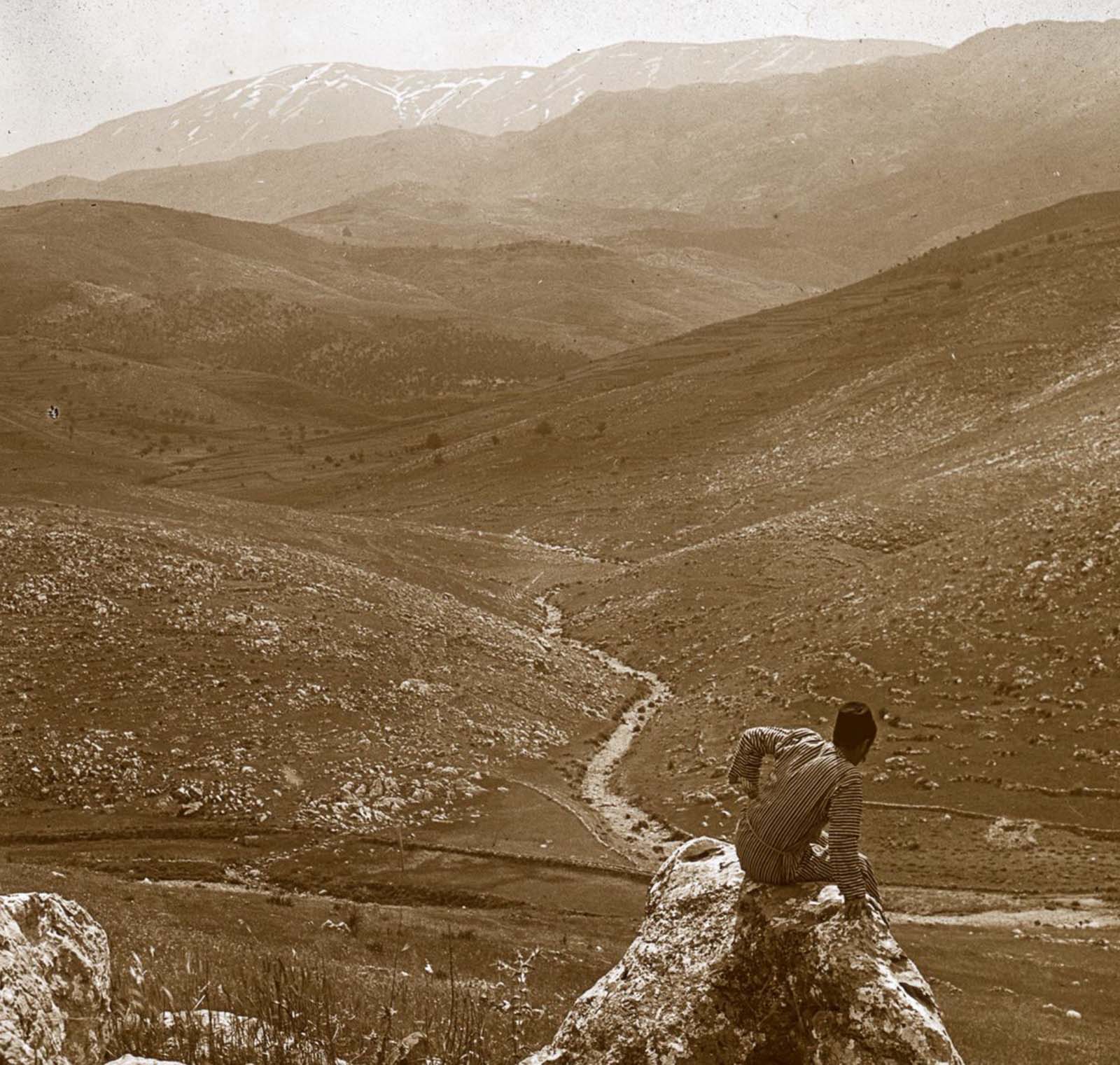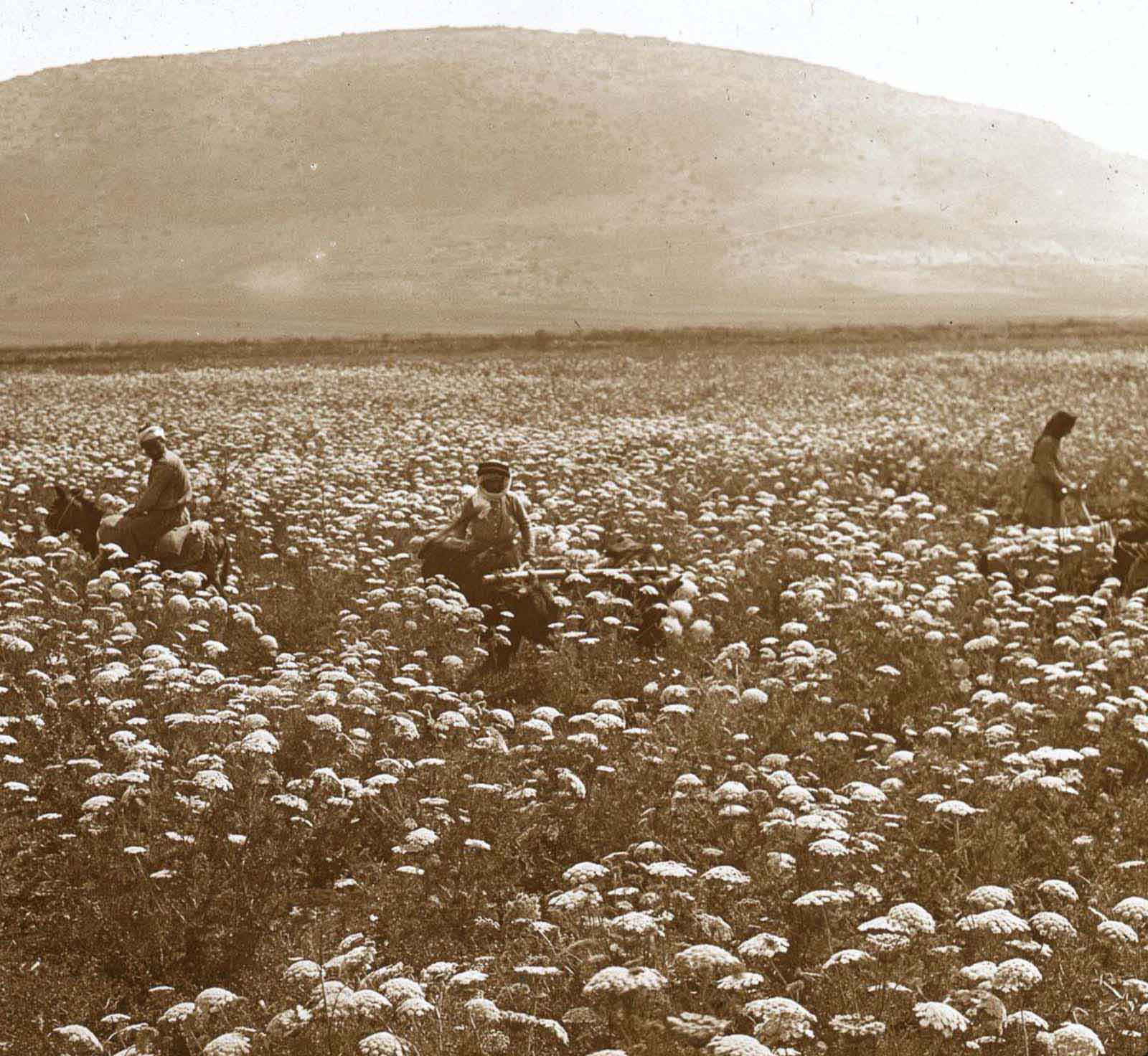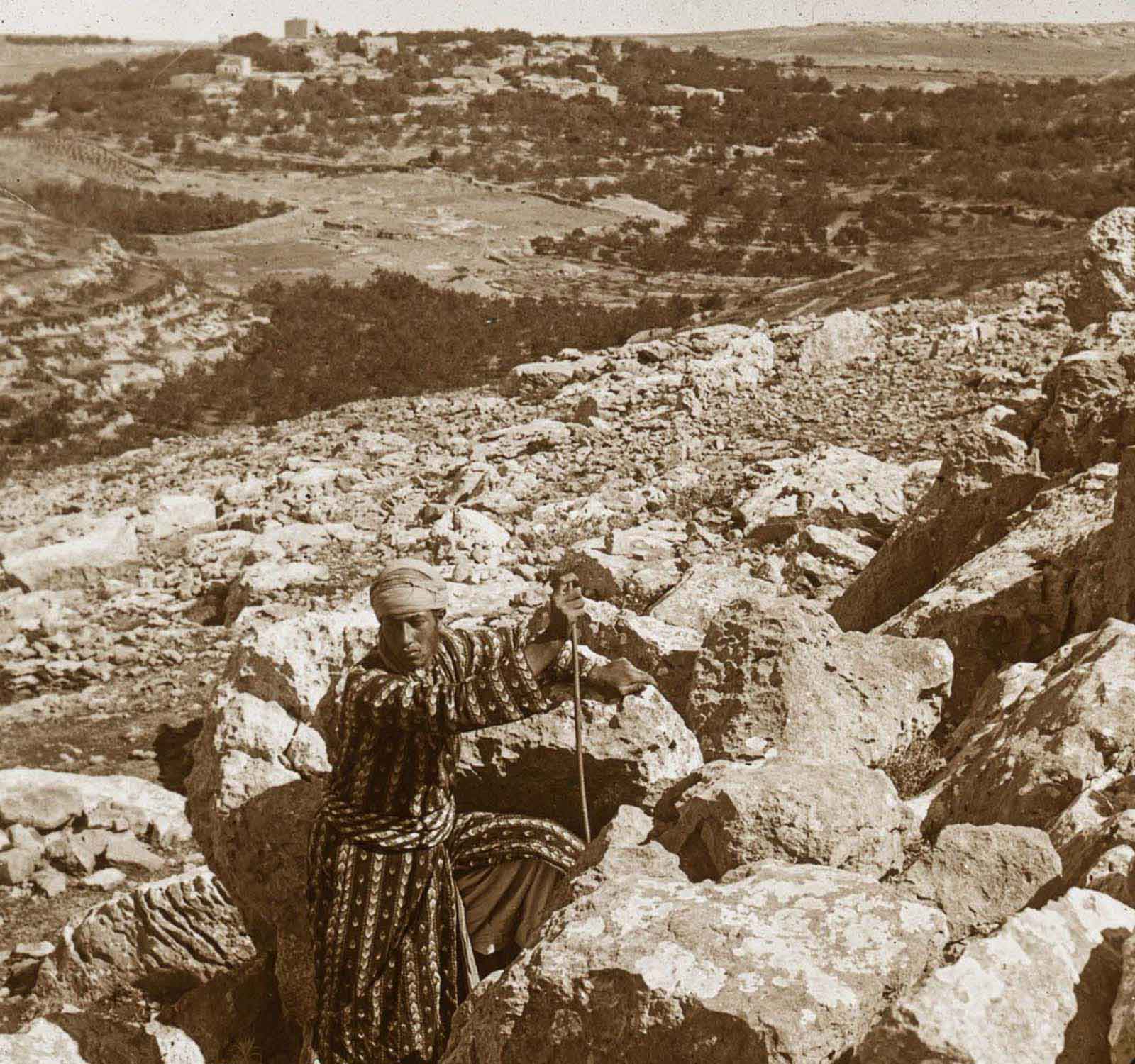The lantern slides are provided by Oregon State University Visual Instruction Department and offer a rare peek of the Holy Land in the last days under the Ottoman Empire. The Holy Land is located between the Jordan River and the Mediterranean Sea. The area extends between the territories of Israel, the West Bank, Jordan, and Palestine. Many of the events in the history of the Jewish people, Christianity, and Islam took place in regions located in the Holy Land. In this small territory, one encounters snow-capped mountains (Mount Hermon), barren deserts (Judean Desert), a large freshwater lake (Sea of Galilee), and a salt sea (Dead Sea). Down the ages, the desire to possess this sliver of land, a Holy Land, had led the followers of a dozen gods and their countless aspects to slaughter each other. Locations central to the lore of all three Abrahamic faiths, i.e. Judaism, Christianity, and Islam, lie in this territory – and for the believers, no price seems too high to pay for possessing it. The Ottomans captured the Holy Lands in 1516 and ruled it until Egypt took it in 1832. Eight years later, the United Kingdom intervened and returned the region to the Ottomans. By the 1800s, the Holy Lands were an afterthought, and tenant farmers who had no real interest in its long-term viability mismanaged the land. It became a desert wasteland, with most of her trees cut down and no major economic efforts. The neglect continued until the late 1800s when Christians from Britain and America sent archaeologists and tourists to the area, and international interest in the Holy Lands increased. Considerable demographic changes happened during the 19th century and with the regional migrations of Druze, Circassians, and Bedouin tribes. The emergence of Zionism also brought many Jewish immigrants from Europe and the revival of the Hebrew language. (Photo credit: Oregon State University Visual Instruction Department). Notify me of new posts by email.
Δ Subscribe
